Dermal papilla cell number specifies hair size, shape and cycling and its reduction causes follicular decline
April 2013
in “Development”
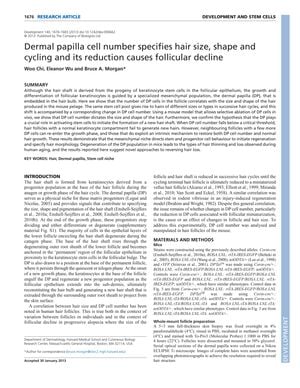
TLDR More dermal papilla cells in hair follicles lead to larger, healthier hair, while fewer cells cause hair thinning and loss.
The study conducted by Woo Chi, Eleanor Wu, and Bruce A. Morgan found that the number of dermal papilla (DP) cells in hair follicles is crucial for determining the size, shape, and cycling of hair in mice. A reduction in DP cell number below a critical threshold resulted in follicles failing to produce new hairs or generating smaller hairs, which is indicative of follicular decline similar to that seen in human aging. The study used a mouse model to selectively ablate DP cells and observed that follicles with more DP cells could re-enter the growth phase and restore normal hair growth. The findings suggest that targeting DP cell populations could be a potential approach to reverse hair loss. The study involved a minimum of 20 hairs from two mice per type/time point for most measurements, with varying sample sizes for specific counts. The research underscores the importance of DP cells in hair follicle regeneration and has implications for developing hair loss treatments.
View this study on journals.biologists.com →
Cited in this study

research Live imaging of stem cell and progeny behaviour in physiological hair-follicle regeneration
Hair regeneration needs dynamic cell behavior and mesenchyme presence for stem cell activation.
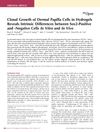
research Clonal Growth of Dermal Papilla Cells in Hydrogels Reveals Intrinsic Differences between Sox2-Positive and -Negative Cells In Vitro and In Vivo
Sox2-positive dermal papilla cells have unique characteristics and contribute more to skin and hair follicle formation than Sox2-negative cells.
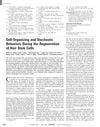
research Self-Organizing and Stochastic Behaviors During the Regeneration of Hair Stem Cells
Hair stem cell regeneration is controlled by signals that can explain different hair growth patterns and baldness.

research Bald scalp in men with androgenetic alopecia retains hair follicle stem cells but lacks CD200-rich and CD34-positive hair follicle progenitor cells
Men with baldness due to androgenetic alopecia still have hair stem cells, but lack specific cells needed for hair growth.
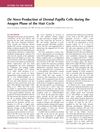
research De Novo Production of Dermal Papilla Cells during the Anagen Phase of the Hair Cycle
New cells are added to the hair's dermal papilla during the active growth phase.
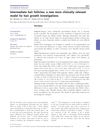
research Intermediate hair follicles: a new more clinically relevant model for hair growth investigations
Intermediate hair follicles are a better model for studying hair growth and testing hair loss treatments.
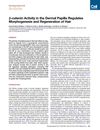
research β-catenin Activity in the Dermal Papilla Regulates Morphogenesis and Regeneration of Hair
β-catenin in the dermal papilla is crucial for normal hair growth and repair.
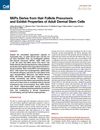
research SKPs Derive from Hair Follicle Precursors and Exhibit Properties of Adult Dermal Stem Cells
SKPs are similar to adult skin stem cells and could help in skin repair and hair growth.
research Bone morphogenetic protein signaling regulates the size of hair follicles and modulates the expression of cell cycle-associated genes

research Quantitative study of the human hair follicle in normal scalp and androgenetic alopecia
Alopecia causes smaller hair follicles and affects growth-related structures.
Related
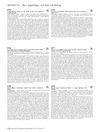
research 575 An extract of Leontopodium alpinum prolongs anagen phase in human hair follicles ex vivo
Leontopodium alpinum extract may help reduce hair shedding by keeping hair in the growth phase longer.
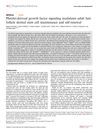
research Platelet-derived growth factor signaling modulates adult hair follicle dermal stem cell maintenance and self-renewal
PDGF signaling is crucial for maintaining and renewing hair follicle stem cells, which could help treat hair loss.

research Dermal papilla cell number specifies hair size, shape and cycling and its reduction causes follicular decline
More dermal papilla cells in hair follicles lead to larger, healthier hair, while fewer cells cause hair thinning and loss.

research β-catenin Activity in the Dermal Papilla Regulates Morphogenesis and Regeneration of Hair
β-catenin in the dermal papilla is crucial for normal hair growth and repair.
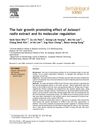
research The hair growth promoting effect of extract and its molecular regulation
Asiasari radix extract promotes hair growth and increases protein synthesis and cell proliferation.
research Hair cycle and hair pigmentation: dynamic interactions and changes associated with aging
As people age, their hair follicles produce less pigment, leading to gray and white hair, due to factors like reduced enzyme activity and damage to melanocyte DNA.
research Do Hair Bulb Melanocytes Undergo Apotosis During Hair Follicle Regression (Catagen)?
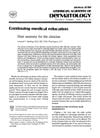
research Hair anatomy for the clinician
Understanding hair follicle anatomy helps diagnose hair disorders.